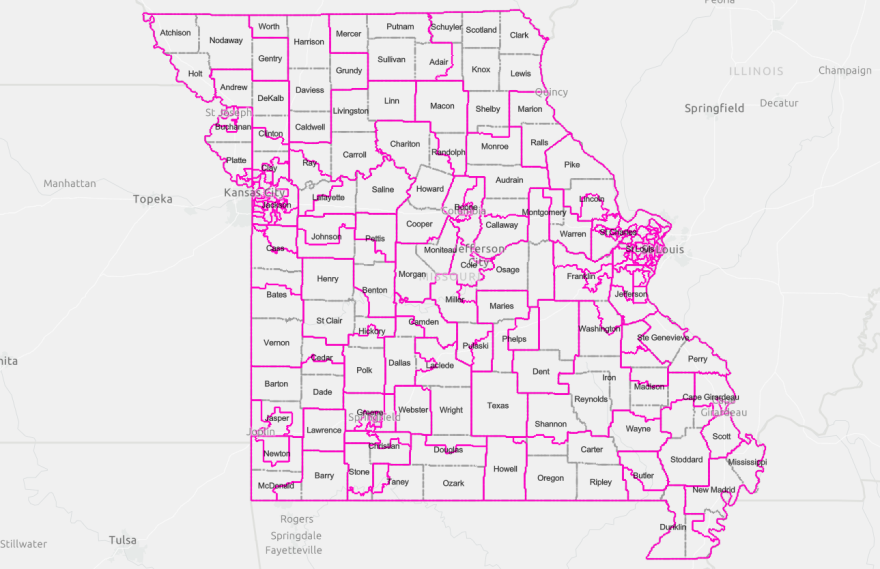In addition to congressional redistricting, which the Missouri legislature has yet to complete and send to the governor, redrawing Missouri’s own Senate and House lines is another task that must be done every 10 years.
For this, two bipartisan citizen commissions were created, with support from both parties needed in order to pass a map. While the Senate commission failed to do so, leaving that responsibility to a panel of judges, theHouse group came to a unanimous agreement on a map.
St. Louis Public Radio’s Sarah Kellogg spoke with Peverill Squire, a political science professor at the University of Missouri, about what the new House map means for residents, Democrats and Republicans.
This interview was edited and condensed for clarity.
Sarah Kellogg: What are your overall impressions of the redistricting map for Missouri’s House districts that the bipartisan committee agreed on?
Peverill Squire: It’s probably the best that both sides could have hoped to get and have support from the commission. You know, it would take more than a simple majority vote for the commission to approve them. That gave the Democrats a little bit more leverage than people might anticipate, given that they're the minority party in the legislature. The General Assembly on the House side won't be dramatically changed by the maps, but it will probably produce a few more competitive districts and probably give the Democrats a chance to pick up a few more seats than they've held over the last couple of elections.
Kellogg: What are some of the bigger changes that you see compared to the current map?
Squire: I think what you've seen, of course, is population growth has been more rapid in suburban areas than in rural areas. And so you're going to see more districts that are combined where the rural influence is linked to some of the suburban districts. And that's going to change the composition of the legislature a little bit, it will be a little less focused on rural interests and a little bit more focused on the interests of people who live in more urban areas.

Kellogg: So, why do you think both Republican commissioners and Democratic commissioners were not only able to agree, but agree unanimously on this map?
Squire: Well, it was a little bit of a surprise. And I think they were, both sides were probably a little worried about turning it over to a panel of judges, probably the Republicans more concerned about what might change. I don't think, again, there were much prospects for dramatic changes, just given the way the population’s distributed and the rules under which they have to operate. But the fact that the commission could come to a unanimous agreement at a time when that's a fairly rare thing to see in American politics is a signal that both sides thought that these maps were acceptable and not skewed heavily in favor of either party.
Kellogg: Do you feel that maybe one side gave more concessions than the other with this map?
Squire: It's not clear, I think the fact that there are probably a few more competitive seats, and maybe the Republicans will lose their supermajority in the General Assembly on the House side. You know that that may be the Republicans making some concession, but it's a fairly small one and control of the legislature is unlikely to shift anytime over the next few elections.
Kellogg: So, what does this mean for politics and for at least the House side, if these districts do become more competitive, some of them?
Squire: Certainly in the coming fall elections, we may see more seats that are contested. Over half the seats in the House have been uncontested in recent years. I think we'll see more races that are contested. And the idea is if you have more races that are contested, then you may have to have more candidates that have to worry a little bit more about the general election and can't focus simply on primary elections.
Kellogg: The Senate commission failed, it will now go to a panel of judges. What are your predictions on how that map is going to turn out?
Squire: It probably, again, won't be any dramatic shift from the current map. There'll be a few changes. My guess is Boone County will be involved in one of those changes and will make a district that's probably a little more competitive for the Democrats than the seat that's in place now. So again, we may see a few shifts in the composition of the Senate. They won't be dramatic. They won't happen quickly because of course not every seat will be contested in 2022.
Follow Sarah Kellogg on Twitter: @sarahkkellogg






